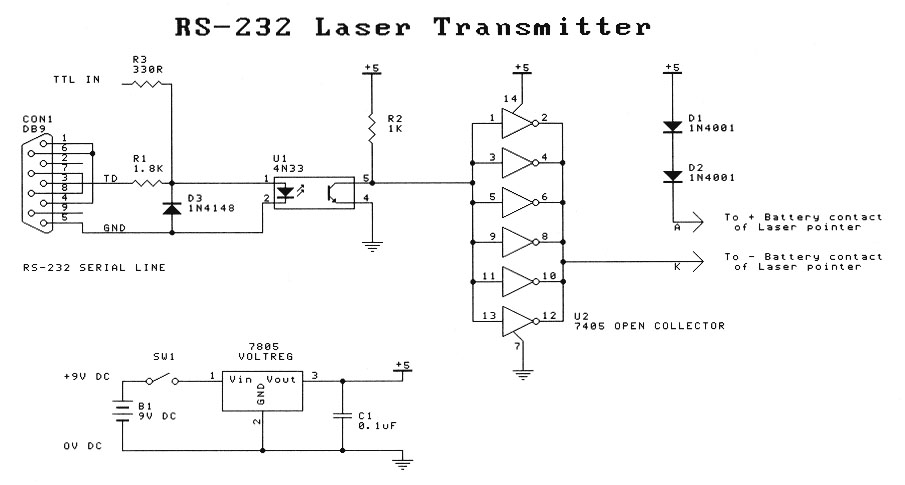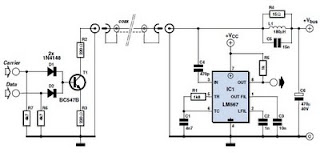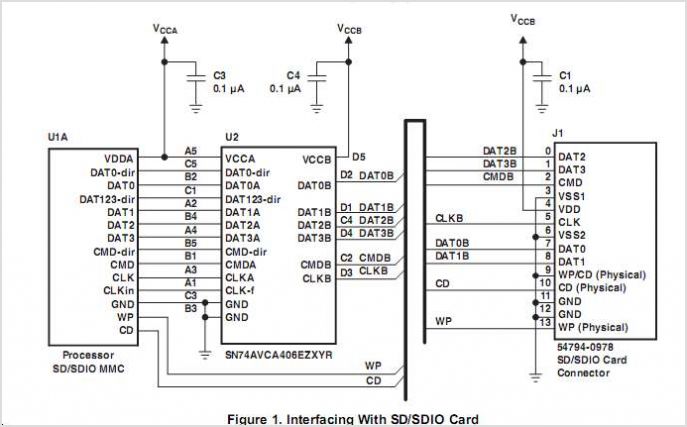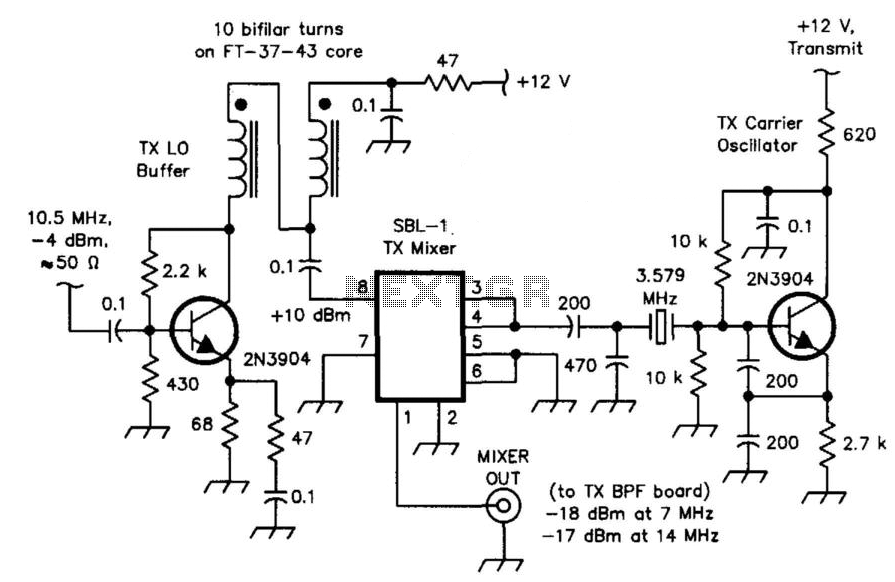
5 W ATV TRANSCEIVER
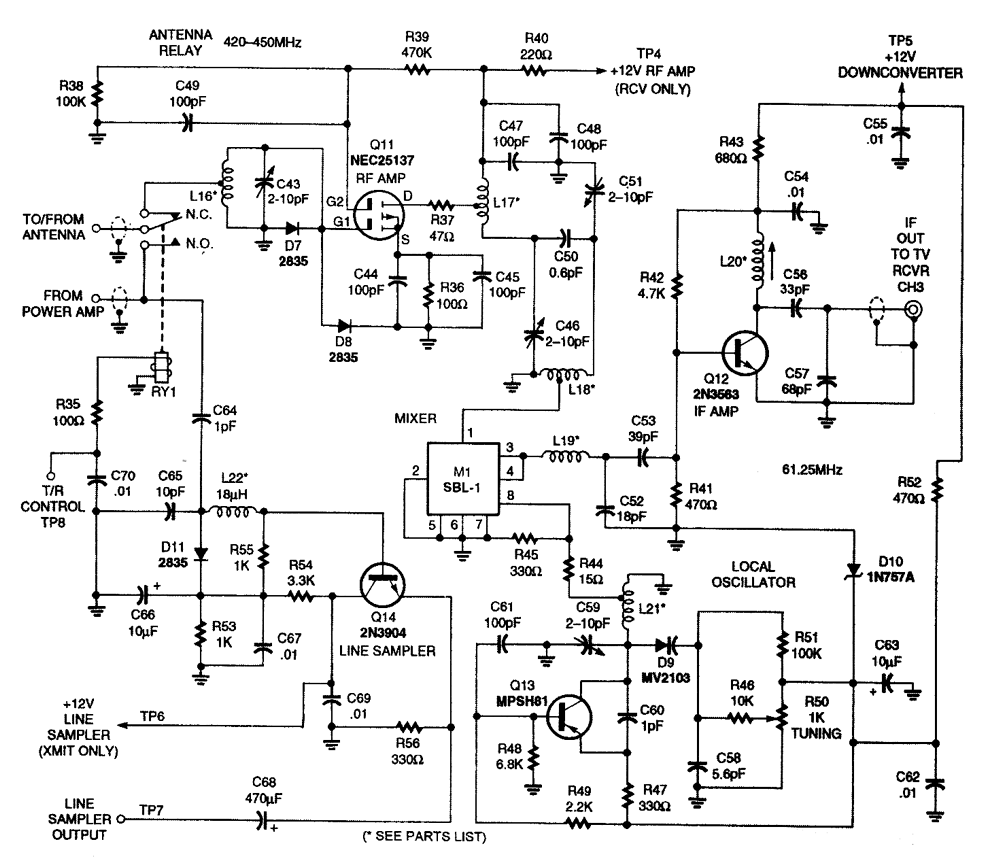
The transmitter schematic, which is a component of the transceiver, can be found in the entry titled S-W ATV Transmitter for 440 MHz, Figure 5-1. The downconverter section is illustrated here. This transmitter includes both video and audio sections, producing five to six watts peak envelope power (PEP) on the sync tips of NTSC video. It offers three channels, with channel switching accomplished through the use of PIN diodes.
The transmitter operates within the 440 MHz band and is designed for amateur television (ATV) applications. The integration of both video and audio sections allows for simultaneous transmission, making it suitable for broadcasting purposes. The output power of five to six watts PEP is adequate for effective transmission over moderate distances, ensuring a clear signal for receiving stations.
The use of PIN diodes for channel switching provides rapid and reliable transitions between the three available channels, enhancing the versatility of the transmitter. These diodes are known for their low insertion loss and high switching speed, which is critical in maintaining signal integrity during channel changes.
The downconverter section of the schematic typically involves the mixing of a local oscillator signal with the incoming RF signal, allowing for the downconversion of the frequency to a more manageable level for further processing. This section is crucial for ensuring that the transmitted signals remain within the required frequency specifications while also facilitating the reception of incoming signals.
Overall, the described transmitter schematic is a robust design that effectively combines video and audio transmission capabilities, making it a valuable component for ATV enthusiasts and professionals in the field. The thoughtful integration of components and the strategic use of technology such as PIN diodes contribute to the efficiency and performance of the device.For the transmitter schematic (part of this transceiver), see entry entitled S-W ATV Transmit-ter for 440 MHz, Fig. 5-1. The downconverter portion is shown here.This transmitter contains both a video and sound section. Five to six watts PEP on synch tips of NTSC video are produced. Three channels are available. Channel switching is via PIN diodes. Power.. 🔗 External reference
The transmitter operates within the 440 MHz band and is designed for amateur television (ATV) applications. The integration of both video and audio sections allows for simultaneous transmission, making it suitable for broadcasting purposes. The output power of five to six watts PEP is adequate for effective transmission over moderate distances, ensuring a clear signal for receiving stations.
The use of PIN diodes for channel switching provides rapid and reliable transitions between the three available channels, enhancing the versatility of the transmitter. These diodes are known for their low insertion loss and high switching speed, which is critical in maintaining signal integrity during channel changes.
The downconverter section of the schematic typically involves the mixing of a local oscillator signal with the incoming RF signal, allowing for the downconversion of the frequency to a more manageable level for further processing. This section is crucial for ensuring that the transmitted signals remain within the required frequency specifications while also facilitating the reception of incoming signals.
Overall, the described transmitter schematic is a robust design that effectively combines video and audio transmission capabilities, making it a valuable component for ATV enthusiasts and professionals in the field. The thoughtful integration of components and the strategic use of technology such as PIN diodes contribute to the efficiency and performance of the device.For the transmitter schematic (part of this transceiver), see entry entitled S-W ATV Transmit-ter for 440 MHz, Fig. 5-1. The downconverter portion is shown here.This transmitter contains both a video and sound section. Five to six watts PEP on synch tips of NTSC video are produced. Three channels are available. Channel switching is via PIN diodes. Power.. 🔗 External reference
